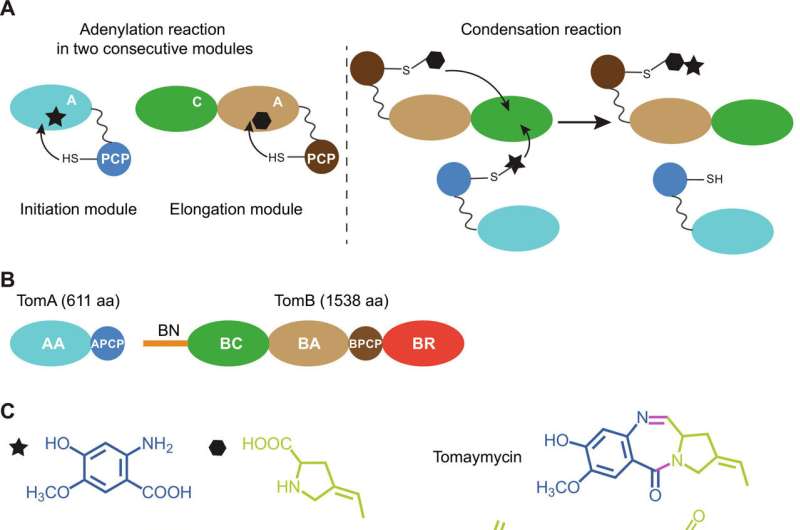This article has been reviewed according to Science X's editorial process and policies. Editors have highlighted the following attributes while ensuring the content's credibility:
fact-checked
peer-reviewed publication
trusted source
proofread
Researchers uncover enzyme communication mechanism that could aid drug development

A mechanism that could help scientists harness enzymes for use in drug discovery has been discovered in a research breakthrough at the University of Birmingham.
In a study published in Science Advances, the Integrative Structural Biology team has succeeded in pinpointing a communication mechanism between proteins making up complex enzymatic machinery that produce organic molecules, called natural products, with a wide range of disease-fighting properties.
The research is an important step in the quest for new approaches to combat antimicrobial resistance which will require new biologically active molecules—the natural products—with antibacterial, antiviral or anticancer properties.
Scientists continually search for new natural products, synthesized in microorganisms by enzymes, and test them for suitable properties.
But scientists are also taking a different approach, attempting to understand the enzymatic machinery themselves. These enzymes are known to be modular in nature, with each module fitting together in a certain way.
By understanding better how these modules fit together to create each specific natural product, scientists would be able to design or modify enzymes, which in turn would enable them to engineer new natural products, or even to fine tune the existing ones that are already known to have useful properties.
Team lead Professor Teresa Carlomagno, Academic Lead of the Henry Wellcome Building for Nuclear Magnetic Resonance the University of Birmingham, said, "These enzymes are capable of producing huge varieties of bioactive substances that could be useful in drug discovery. However, we don't fully understand the principles governing how they work, or how they are assembled. Our research provides a valuable step towards understanding, and potentially exploiting these principles, which could help us design useful new enzymes."
The team was able to use sophisticated equipment for structural biology based in the Henry Wellcome Building for Nuclear Magnetic Resonance, at the University of Birmingham. This enabled them to take a closer look at dynamic communication processes within the enzymatic machinery, which cannot be examined using other structural techniques, such as X-ray crystallography, because the processes are very dynamic.
Using the example of the anti-cancer drug Tomaymycin, the researchers showed how the two modules making up the enzyme were able to "find" each other and join together to form the correct configuration.
"While we are still a long way from being able to engineer new enzymes, this work opens up some really exciting new possibilities for future research and is a step towards a new approach in drug discovery," said Professor Carlomagno.
More information: Megha N. Karanth et al, The specificity of intermodular recognition in a prototypical nonribosomal peptide synthetase depends on an adaptor domain, Science Advances (2024). DOI: 10.1126/sciadv.adm9404
Journal information: Science Advances
Provided by University of Birmingham



















